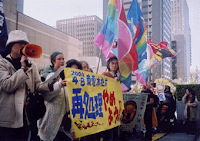100 Years Of Aviation In Japan: The Pioneers

No aviation without brave pilots: There were people fascinated with flight even in the Edo period, such as Ukita Kokichi from Okayama, who made attempts at calculating what wingspan would be needed to let man soar like a bird, something he seems to have achieved in 1785: Ukita studied how birds fly. He finally concluded, "Compute the ratio of the wing's area to the body's weight and use that ratio to create an artificial wing. Humans may use them to fly like a bird." His skill of paperhanging was very useful for making wings. He made the wings' ribs of bamboo, covered them with paper and fabric and varnished the surface with lacquer from Japanese persimmons. (Source: Wikipedia ) Fast forward to the late 19th century, and we have Chuhachi (Tyuuhaci) Ninomiya, who made paper planes that may have been able to carry a man. The first airplane flight in Japan was likely on 29 April 1891, when a propeller-driven unmanned plane took off and flew about 10 meters at a heig





